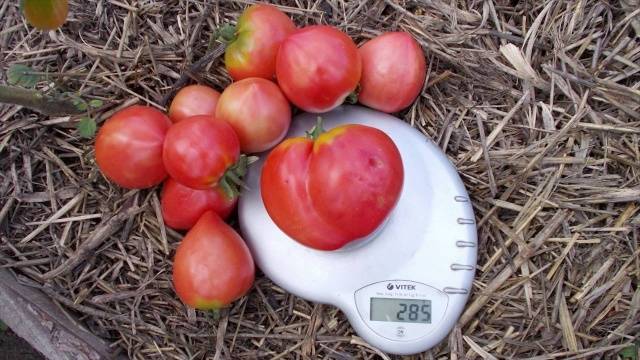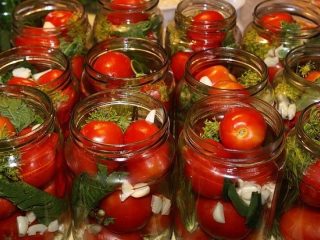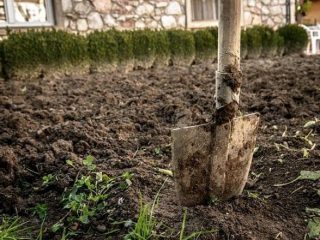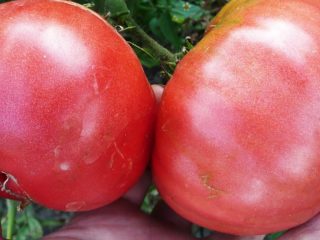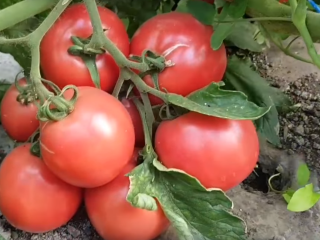Content
Large-fruited pink tomatoes, the fruits of which are shaped like a heart, are considered the most delicious. This is exactly what the Danko tomato looks like: a large, fleshy fruit with a thin, bright pink skin, sweet pulp and a strong aroma. The Danko variety is considered a salad variety, like all pink-fruited tomatoes; it is recommended to be consumed fresh and used for preparing summer salads, lecho, pastes and sauces. But It’s not even the taste of this tomato that became the key to its popularity - Danko is very unpretentious, and it can be grown in almost any region and in any climate.
Detailed characteristics and descriptions of the Danko tomato variety are given in this article. Here you can also find a list of the strengths and weaknesses of a tomato, learn how to grow it, and how to increase productivity.
Description of the variety
Those who have at least once planted Danko on their plot will certainly return to this tomato again. The tomato is not high-yielding, but it bears fruit consistently, regardless of climatic and other external factors.
The Danko tomato variety was developed by domestic breeders, and it belongs to the Siberian selection of tomatoes. This means that the tomato tolerates low temperatures and lack of sunlight very well, that it is not picky about the composition of the soil and is ready for any weather changes.
Characteristics of the Danko variety:
- the tomato is of a determinate type, that is, the bushes have a final growth point;
- the height of the bushes is small - about 50 cm, they are compact, not too thick;
- a universal-purpose variety: suitable for growing in the ground and in a greenhouse (in greenhouses, a tomato can grow up to 120 cm);
- fruit ripening dates are mid-early - 110 days after germination, tomatoes will begin to turn pink;
- It is recommended to form Danko bushes with 3-4 stems - this will significantly increase tomato yield;
- There is no need to plant a tomato; when grown in a greenhouse, the bushes may need support;
- the Danko variety tolerates not only cold, but also severe drought and summer heat;
- the largest tomatoes are formed in the lower clusters;
- the shape of the fruit is heart-shaped, the surface with barely noticeable ribbing;
- The color of unripe tomatoes is light green; when the tomatoes ripen, they turn red-orange and have a dark green spot near the stalk;
- the average fruit weight depends on the growing method: in the ground - 250 grams, in greenhouses - about 400 grams;
- The Danko tomato has an excellent taste, the flesh is sugary, dense, very sweet;
- the peel on the fruit is thin, so Danko is not suitable for long-term storage and transportation;
- The purpose of tomatoes is salad - they are best eaten fresh;
- the yield of Danko tomatoes is average - about 3-3.5 kg from each bush;
- Danko tomatoes have a good presentation, but due to their thin skin they often crack;
- the variety has good resistance to “tomato” diseases and is rarely affected by pests;
- Thanks to the early ripening juices, the tomato is rarely susceptible to late blight, which peaks in August.
Advantages and disadvantages
Reviews about Danko tomato are mostly positive. The most important quality of this variety is its versatility: Danko can be grown in open ground in any region of Russia (from the south to the Urals), this tomato is also suitable for planting in a greenhouse; it does not require a lot of light and heat for normal development.
Danko tomatoes have several more important advantages, such as:
- excellent taste;
- beautiful appearance of the fruit (as proven by the photos from the article);
- large size tomatoes;
- compact bushes;
- good yield;
- immunity to various diseases and resistance to pests;
- the ability to bear fruit in difficult climatic conditions (be it intense heat, high humidity, drought or uncharacteristically low temperatures for summer).
It is clear that the description of the Danko variety will not be without its shortcomings. After all, like all pink tomatoes, This tomato does not tolerate transportation well, it is unsuitable for growing on an industrial scale, and can crack from excess soil moisture.
Although the Danko variety is capable of bearing fruit in poor conditions, the tomato yield will sharply decrease – the fruits will begin to form in limited quantities. Adding to the complexity of agricultural technology is the fact that tomatoes grow stronger in greenhouses, so their bushes will have to be tied up or support must be found for them.
Agrotechnical techniques
The technology for growing the Danko tomato will largely depend on the region, because planting dates, care and harvesting activities will change depending on this. Although the tomato is unpretentious by nature, it is stupid to expect high yields from Danko without paying any attention to it. Like all cultivated plants, this tomato loves to be looked after: fed, watered, etc.
How to plant tomatoes correctly
Danko in Russia is grown only by seedlings. Therefore, the first thing a gardener should do is buy Danko tomato seeds and sow them to obtain seedlings.
The timing of sowing tomato seeds depends on the climate in specific regions. Thus, in the central part of the country, early-ripening tomatoes are sown in early March. You can start preparing seeds for planting in the last days of February.
Danko tomatoes are a fairly common variety, so finding seeds on sale will not be difficult.It is better to give preference to processed planting material that is completely ready for sowing.
If the gardener collected tomato seeds himself or bought unprocessed material, one cannot ignore rules for preparing tomatoes for planting:
- rejecting empty seeds;
- warming up planting material;
- disinfection of tomatoes with a solution of potassium permanganate, hot water or other means;
- stimulation of germination by soaking tomato seeds in biostimulants (such as Epin, for example, or aloe juice);
- germination in a humid and warm environment.
Danko tomatoes must be planted in loose and nutritious soil that can allow air and moisture to pass through. It is easy to prepare a mixture for seedlings yourself: for this, garden soil is mixed with sawdust or peat, sand is added for looseness, fertilized with mineral components in the form of potassium and phosphorus, or organic matter is used (wood ash, lime, humus).
Danko seedlings must be plucked when the tomato has its first pair of true leaves. This process helps prevent tomatoes from stretching out (which often happens with seedlings due to lack of light in the northern regions of the country) and stimulates the root system (lateral roots will begin to actively grow).
Danko tomato seedlings are brought into the ground when the soil warms up to +10 degrees and the threat of night frosts has passed (in the north of the country, planting tomatoes begins no earlier than June 10). The optimal planting pattern is 4 bushes per square meter, but these tomatoes can be planted more densely.
Tomatoes are transferred to greenhouses around the twentieth of May (in the south of Russia this is done a couple of weeks earlier). There is no need to plant Danko too densely, as this tomato grows stronger in greenhouse conditions. You also need to think about how to tie up tall bushes.
How to care for plantings
The Danko tomato variety is indeed unpretentious when compared with other pink-fruited and heart-shaped tomatoes. However, this does not mean that the bushes do not need to be looked after at all - like any tomato, Danko requires constant attention from the gardener.
Caring for tomatoes is as follows:
- Watering. Tomatoes are watered as the soil dries out. It is best to do this in the evening, when the heat has subsided. Water for irrigation is taken to be settled and warm. Danko tolerates periods of drought well, but the gardener must understand that this will certainly affect the size and quantity of fruits.
- Danko form, removing all shoots except the first three or four. If this is not done, the plants will have poor fertility.
- Tomatoes are necessary weed, hill up, periodically loosen the soil between the rows, preventing it from cracking. To save time and effort, a gardener can use mulch, which will protect the soil from drying out and prevent grass from growing.
- Need a couple of times a season apply fertilizer, use both organic and mineral complexes.The gardener should not overdo it with nitrogenous fertilizers, since they only lead to an increase in green mass (the bushes will be beautiful, but tomatoes will not form on them).
- If traces of the disease are noticed, you must immediately carry out processing tomatoes with a special product. To prevent infection by Danko, it is better to carry out preventive spraying of the bushes even before they bloom.
- Bushes growing in greenhouses tie up. If the tomatoes have set a lot of fruits on the ground, they can also be tied up so that the shoots do not break off.
- Harvest is harvested on time, not forgetting about the predisposition of Danko fruits to cracking.
Review
Conclusion
The Danko tomato variety is ideal for gardeners and summer residents from cold regions of Russia, although this tomato can withstand both heat and drought. It is not recommended to grow this variety on an industrial scale, as the fruits quickly deteriorate and become wrinkled during transportation. The tomato is very persistent, unpretentious, beautiful and tasty - what more does a gardener need!











